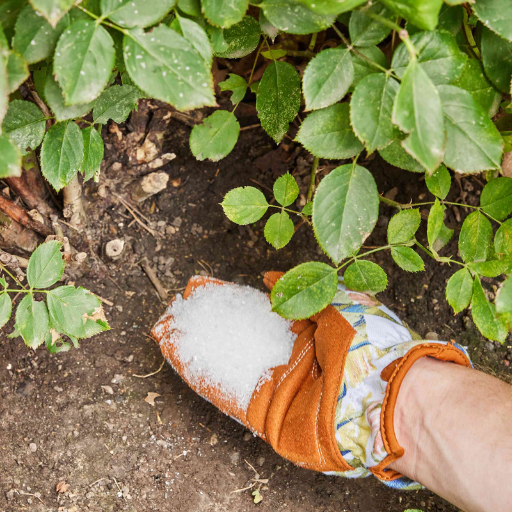Epsom salt, also referred to as magnesium sulfate, is a natural mineral that has gained popularity due to its versatility and advantages in gardening. This article examines the various ways in which Epsom salt contributes to better plant growth and health. From increasing nutrient uptake to encouraging flowering and fruiting, this compound is easy and inexpensive for gardeners who want to improve their plants’ vigor. The science behind its efficiency, proper application techniques, and specific types of flora that benefit most are issues we shall delve into. As a seasoned gardener or beginner, one should understand how Epsom salts play their part in your backyard for healthy plants throughout the growing season.
What is epsom salt, and how does it benefit plants?
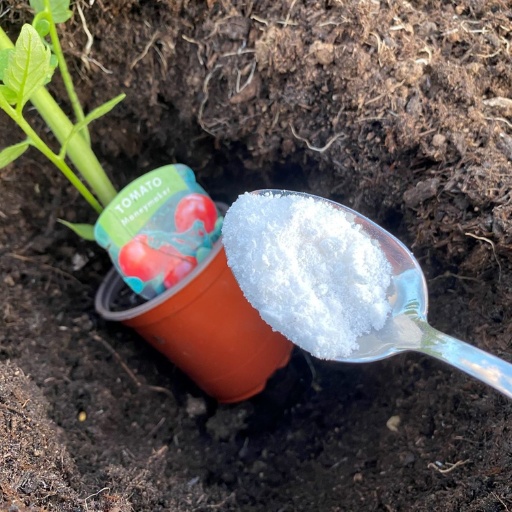
I am understanding the composition of Epsom salts.
Epsom salt is made up of magnesium, sulfur, and oxygen with the chemical formula MgSO₄. This helps in chlorophyll production, which is crucial for photosynthesis. It helps produce chlorophyll that gives plants a green color and is needed in their ability to convert sunlight into energy. Further, it promotes amino acids and protein formation, which are crucial for plant growth and development. Together, these elements enrich the soil nutrients while also boosting water absorption, which is why Epsom salt is a good amendment for different plants, including tomatoes, peppers, and roses. Gardeners who understand its composition can use it to promote healthier and more productive plants.
How magnesium and sulfur help plants
Magnesium and sulfur play significant roles in ensuring healthy development of crops.
1. Magnesium (Mg):
- Chlorophyll Production: Magnesium forms an integral part of the chlorophyll pigment, essential during photosynthesis. Insufficient amounts cause leaves to yellow (chlorosis), hence stunted growth due to a shortage in energy supply.
- Nutrient Uptake: It allows other vital minerals, like nitrogen or phosphorous, to be easily absorbed, thereby improving the plant’s nutrition.
- Photosynthesis Efficiency: Approximately 25% of the total magnesium content in the entire plant may be used for photosynthesis, thus drawing attention to its importance in energy transformation.
2. Sulfur (S):
- Amino Acid Formation: Sulfur is necessary to synthesize amino acids that build proteins. These include essential amino acids, such as cysteine and methionine, responsible for plant growth.
- Enzymatic Functions: It is a component of some essential enzymes or coenzymes involved in numerous metabolic reactions within the organism, thus contributing to metabolism and strengthening it against different environmental pressures.
- Nutritional Quality: Sufficient amounts of sulfur have been shown to enhance the flavor and improve the nutritional value of some crops, such as garlic, onions, and cruciferous vegetables.
Adequate magnesium and sulfur provision to plants helps create a favorable environment for healthy growth and higher productivity.
Typical uses of epsom salt in the garden
I have often used Epsom salt in my garden for several beneficial reasons. One of its primary purposes is to help germinate seeds and increase seedlings’ overall health by supplying necessary magnesium that helps produce chlorophyll. Also, I put Epsom salts around my tomato plants, which results in better fruit development and enhances flavors. It also prevents blossom end rot, ensuring calcium and magnesium uptake. Based on my experience, applying Epsom salt directly to leaves can also increase nutrient absorption and provide a quick source of magnesium to plants, resulting in healthier growth and more excellent defense against pests.
How can epsom salt be used effectively for plants?

Dosage of epsom salt recommended for vegetable gardens
I recommend that the average quantity of Epsom salt to use in a vegetative garden ranges between 1 and 2 tbs per foot of plant height and can be done every four to six weeks during the growing season. For example, if I have a tomato about two feet high, I would apply about two to four tablespoons by incorporating them into the soil or dissolving them into water for foliar spray application. This calls for monitoring the reactions of plants since some may need to be adjusted depending on soil type or even variety. Remember moderate usage, as too much Epsom salts will cause nutrient imbalances.
Make up an epsom salt solution for your indoor plants.
To create an Epsom salt solution for my houseplants, I dissolve around one tablespoon in approximately a gallon of water. A diluted mixture makes magnesium and sulfate available without overwhelming the plants themselves. Hence, monthly watering with this solution becomes a schedule that depends on plant individualities. If magnesium deficiency symptoms appear like yellowing leaves, more frequent applications would be necessary until recovery happens. To avoid root rot due to stagnant water, good drainage should always be encouraged thus making sure that one always waits till the soil has dried before re-applying.
How frequently should you put epsom salts?
From my usual practice, adding Epsom salts every 4-6 weeks in any growing season seems to work well with most crops. Regarding indoor plants, applying diluted form every month helps me meet this requirement about which I must always judge each plant’s condition; if there are signs of magnesium deficiency, such as yellow leaves, then it might need increasing frequency till they return. Over-application can, however, occur so long as adjustments are made based on the specific needs of individual plants and the soil characteristics.
What role does epsom salt play in preventing blossom end rot?

Understanding blossom end rot in tomato plants.
As I grew my tomatoes, blossom end rot became common, involving dark, sunken lesions at the fruit’s blossom end. Inadequacy of calcium in the soil is often to blame for this condition, but sometimes irregular watering habits are also a cause. For gardening websites’ research, one must keep moisture constant. If there are variations in the humidity of the soil, then this can impede calcium uptake, leading to the development of blossom end rot.
One way to fight against this issue is by adding Epsom salts. They help provide magnesium while boosting plant health and indirectly aiding calcium absorption (Dyer, 2012). Typical technical soil calcium benchmarks range between 1400 and 2000 mg/kg (Dyer, 2012). Also, maintaining a soil pH range of 6.0 to 6.8 maximizes the availability of nutrients (Dyer, 2012). Therefore, my water schedule remains unchanged as I ensure regular soil moisture and composition checks, occasionally supplementing with Epsom salts.
How epsom salt can remedy blossom end rot
In the case of tomato plants, it has been my experience that Epsom salt is an excellent thing to use when trying to eliminate blossom-end rot from them. After scrutinizing top gardening websites linked with this topic, I discovered that Epsom salt’s magnesium plays a vital role in general nutrient absorption, such as calcium, which prevents blossom end rot case studies (Calcium Deficiency). I usually apply this remedy by mixing one tablespoonful of Epsom salt with one gallon if water and pouring over the garden every four to six weeks or even earlier when I suspect first signs which indicate blossoming ends have begun deteriorating.. Besides evenly watering my vegetables constantly, I am always careful about maintaining desired moisture levels within the ground, thus minimizing incidences related to Blossom end rots. As a result, this has drastically reduced this irritating problem in my garden.
Which plants benefit most from epsom salt?
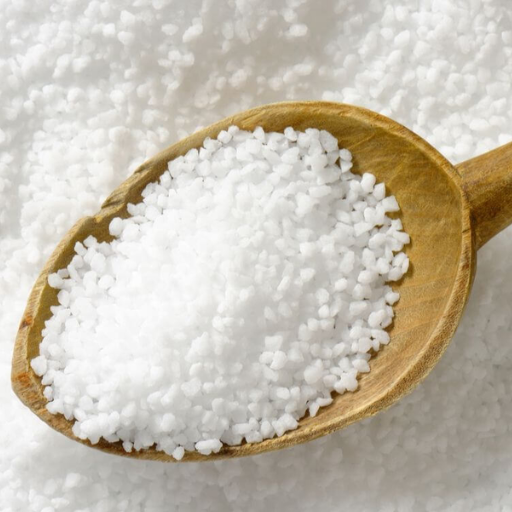
How rose bushes bloomed with the help of Epsom salt
Epsom salt has significantly improved my roses’ flowering. I checked out several leading gardening websites and found magnesium in Epsom salt can boost plant health and encourage flowering. Usually, I dissolve one tablespoon of Epsom salt in a gallon of water and apply it directly to the soil around my roses once every month during the growing season. Not only does this promote good bloom, but it also enhances overall plant health. Since then, I have noticed more robust roses with more intense colors and more flowers because of this simple addition to my regular gardening.
How to use epsom salts for peppers and tomatoes
From my experience, using Epsom salts has had significant advantages for peppers and tomatoes in my garden. From checking popular gardening resources, I learned that these plants need sufficient magnesium from Epsom Salt to enhance nutrient uptake- mainly through their leaves- which are also their favorite spots. Every two weeks during the growing season, I mix one tablespoon of Epsom salts in a gallon of water and drench it into the soil. By doing so, not only do I make them more robust, but I also get higher yields with better taste for both pepper and tomato crops. Adding Epsom Salts to my schedule was worth it!
Can epsom salt improve soil quality?
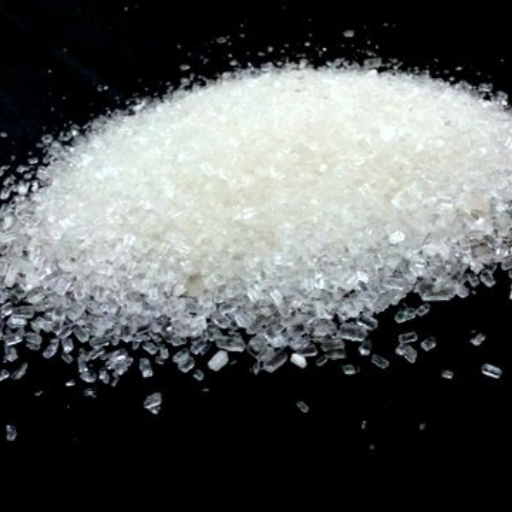
The effects of epsom on soil pH
From my reading through several top gardening websites, I have come to understand that Epsom salt can do a great job in influencing the pH levels of soils. Though not primarily meant for soil amendment purposes, the magnesium component in Epsom salts helps neutralize acidic soils, leading to better soil fertility and general health. When I use an Epsom salt application, the PH levels of the soil are more balanced, thereby increasing the availability of nutrients to plants. This has helped me achieve healthier growth and increased yields in my garden, particularly for crops that prefer slightly acidic conditions. In conclusion, employing Epsom salts is an easy but effective means of supporting my soil’s pH balance.
Improving nutrient uptake using epsom salt
In my experience, applying Epsom salt greatly enhances nutrient availability in the dirt. Various gardening websites show magnesium and sulfate components in Epsom salts are significant for plant nutrient absorption. Magnesium contributes to chlorophyll synthesis, which is necessary for photosynthesis, while sulfate provides vital amino acids and protein synthesis materials. My plants’ health has improved significantly, mainly due to their enhanced ability to assimilate nitrogen, phosphorus, and potassium faster than before. This boosts both their growth, flavoring and the taste of fruits grown from there. This has been a critical element of my success in gardening!
Are there any risks associated with using epsom salt?
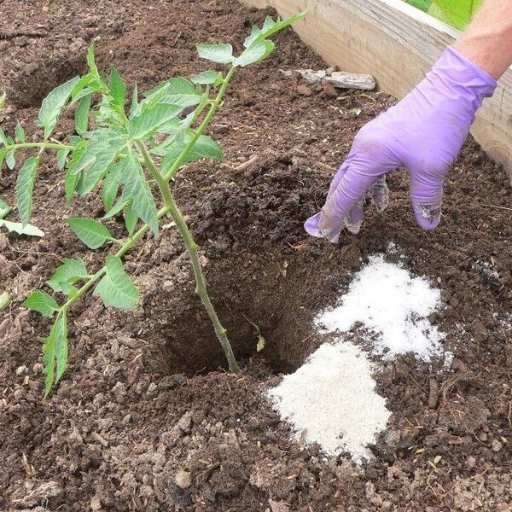
Identifying plant deficiencies
During my experience in gardening, I have learned to identify nourishment problems ailing my plants by simply looking at their physical signs. For example, if I observe that the leaves are yellowish, especially those at the base of the plant, then it indicates nitrogen deficiency. In contrast, if their leaves turn purplish, mainly when they are still young, then it means that they lack phosphorus. A specific signal for insufficient potassium might be represented as retarded growth and curled leaves. Additionally, there could be leaf spots or pale coloration, which may imply magnesium or iron deficiency. The sources on major gardening websites have helped me understand these symptoms more effectively and quickly respond to nutrient shortages, improving my garden’s well-being.
Epsom salt: when not to use it
Although Epsom salt can help in many ways, there are some specific situations where its application is undesirable for me while I do gardening activities. Firstly, if already aware that my soil has enough magnesium or sulfate minerals, I don’t apply the Epsom salts since extra quantities cause such nutrient imbalance within them. Another reason I avoid its usage is when plants show signs of excessive fertilization, like burnt edges on leaflets or hurried falling off their foliage, as this will only aggravate them into stressed conditions. Lastly, during the dormant period for most plants alive today, applications are held back due to their deficient nutrient uptake at this time. By adhering to these circumstances, I ensure that Epsom salt remains a beneficial rather than a harmful tool for gardening purposes.
Reference sources
Frequently Asked Questions (FAQs)
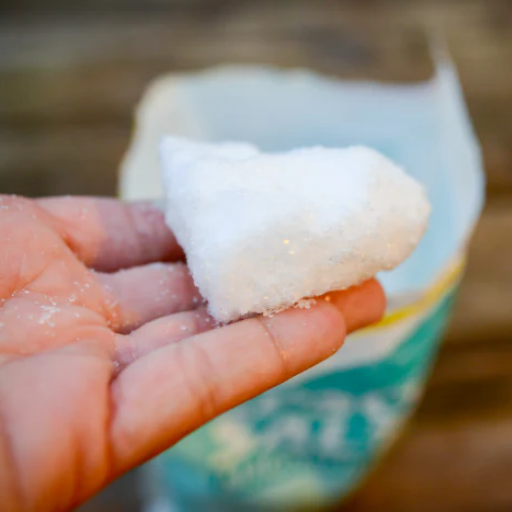
Q: How does Epsom salt serve as a fertilizer for plants?
A: Epsom salt can help improve plant growth by providing magnesium and sulfate, essential nutrients. This makes it an effective supplement to regular fertilizers.
Q: What is the recommended amount of Epsom salt per gallon of plant water?
A: The typical recommendation is to dissolve two tablespoons of Epsom salt per gallon of water to create a nutrient-rich solution for feeding your garden plants.
Q: How can I use Epsom salt around the base of my plants?
A: To promote better nutrient absorption, add one tablespoon of Epsom salt around the base of the plant and gently work it into the soil.
Q: What types of plants can benefit from Epsom salt?
A: Many garden plants, including pepper plants, tomatoes, and certain shrubs, can benefit from Epsom salt, especially if they are magnesium deficient.
Q: How often should I apply Epsom salt to my garden soil?
A: It is generally recommended that Epsom salts be applied every four to six weeks during the growing season to ensure that plants receive a consistent supply of magnesium and sulfate.
Q: Can I add Epsom salt directly to the soil?
A: Yes, Epsom salts can be used directly in garden soil. Mix half a cup into the soil before planting or add it to the soil around established plants.
Q: What are the signs that plants are magnesium deficient?
A: Signs of magnesium deficiency include yellowing leaves, poor growth, and leaf curling. Adding Epsom salt can help address the deficiency if you notice these symptoms.
Q: Where can I find more information on using Epsom salt for gardening?
A: You can find more tips and guidelines on using Epsom salt for plants at garden.org and the National Gardening Association.
Q: Is Epsom salt safe for all types of plants?
A: While Epsom salt is generally safe for most plants, it’s best to check the specific needs of sensitive species. Overapplication may lead to salt build-up in soil, which could harm plants.



